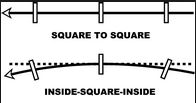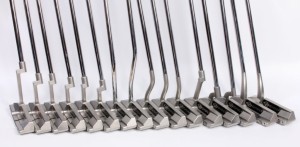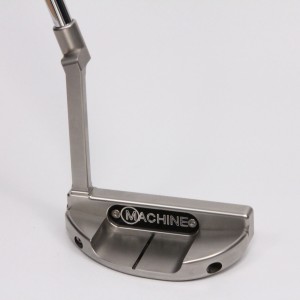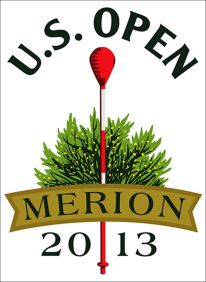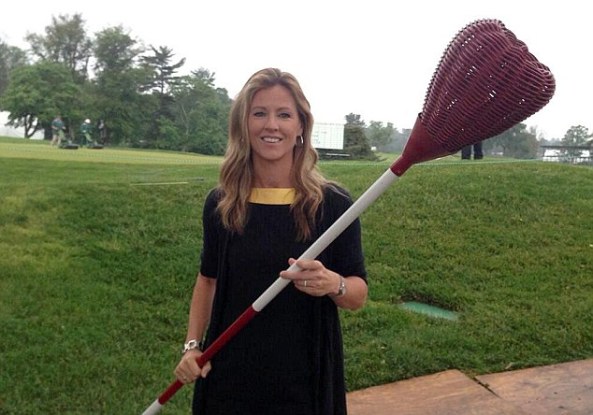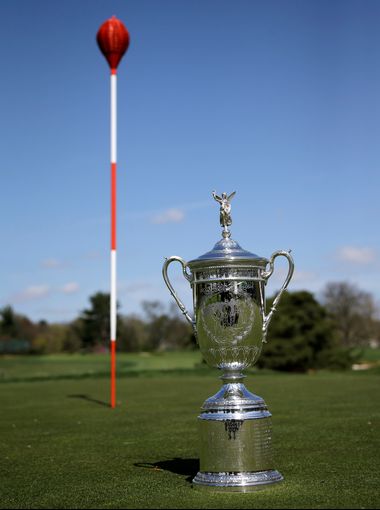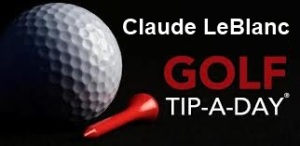This is great information if you want to improve your putting.
Putter Fitting is a no-brainer. Putting with an off-the-rack putter is like competing in the high jump from a ditch. You first step to better putting is to get on a level playing field.
Your Putting Stroke:
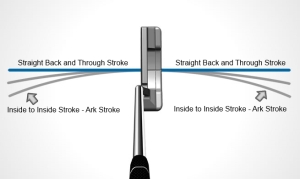
1- Straight Back and Through Stroke
2- Inside to Inside Stroke – Ark Stroke
Prior to deciding on a putter, determine what you putting stroke style is. Every golf putting stroke is going to fall into one of two categories: either straight back and through, always keeping the putter face square to the ball, or inside to inside motion, or an abbreviated adaptation of the full golf swing. These two different putting strokes will determine the type of putter that is best for you.
Now that you have determine your putting stroke, make sure your putter is the correct lenght.
Putter lenght:
First let’s make sure your putter is the right lenght. This way, your eyes will be over the ball and your arms will be in a vertical position for you to make your stroke.
Lenght:
- Very important to keep ball close to your feet, eyes over the ball and arms hanging down to a vertical position.
Too Long:
You will stand further from the ball and your eyes will be well inside the ball. The toe of your putter will be off the ground causing it to aim to the left. (Right Handed Player)
Too Short:
You will stand closer to the ball and your eyes will be beyond the ball. The heel of your putter will tend to lift off the ground causing it to aim to the right. (Right Handed Player)
Types of Putters- What’s Best for You
Left: Toe-down balanced.
Center: 45 degree balanced.
Right: Face Balanced
The results of offset and non-offset putters:
Think of it as this: (If your missing your putts to the left- Right Handed Player)
1- If you putt with a toe weighted putter, the club face will stay open longer during the stroke because the heal is lighter and will pass slightly quicker then the toe of the club. Helping pull shots to stay online.
2- If you putt with a 45 degree balanced putter, the club face will stay open not as long as the toe weighted putter but slightly longer then the face balanced putter during the stroke because the heal is slightly lighter and will pass slightly quicker then the toe of the club. Helping pull shots to stay online.
3- If you putt with a face balanced putter, the club face should go straight back to straight through.
Offset or Non-Offset Putters
The more offset your putter, the less left you will hit your shots. (Right handed player) The offset helps the putter face to stay behind a little more helping the average player to hit to the right. So if you are always missing your shots to the left, consider using a offset putter.
No matter what level of golfer you are, finding the best putter for your putting stroke will be your first step to improved putting. The types of putters you choose from is significant, as it is the single club which you will utilize much more than every other during a round of golf. Becoming a decent or even great putter involves a putter that is exact for you.
Heal and Center Shaft Putter:
A center shafted putter will stay straight during:
1- Straight Back and Through Stroke
A heal shafted putter will help players that has a tendency to pull their shots to the left. 2- Inside to Inside Stroke – Ark Stroke
From what I’ve read, if you have a straight back and thru putting stroke then a center shafted putter is better suited for you.
If putting stroke has a bit of an arc, then heel shafted is possibly a better choice.
Go see your Golf Professional and try many putters with different offsets and different shaft position to help your game.
By the way: If you ten to always push to the right, what kind of putter are you using??, is it a toe weighted putter????
Hope this helped!
Good golfing!
